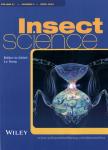Crossing experiments and behavioral observations reveal reproductive incompatibility among three putative species of the whitefly Bemisia tabaci
Crossing experiments and behavioral observations reveal reproductive incompatibility among three putative species of the whitefly Bemisia tabaci作者机构:Ministry of Agriculture Key Laboratory of Molecular Biology of Crop Pathogens and Insects Institute of Insect Sciences Zhejiang University Hangzhou College of Chemistry and Life Sciences Zhejiang Normal University Jinhua Zhejiang Province China
出 版 物:《Insect Science》 (昆虫科学(英文版))
年 卷 期:2010年第17卷第6期
页 面:508-516页
核心收录:
学科分类:0710[理学-生物学] 0830[工学-环境科学与工程(可授工学、理学、农学学位)] 07[理学] 0905[农学-畜牧学] 09[农学] 0904[农学-植物保护] 0901[农学-作物学] 0713[理学-生态学]
主 题:Bemisia tabaci behavioral observations crossing experiments genetic groups putative species reproductive incompatibility
摘 要:The whitefly Bemisia tabaci has a global distribution and extensive genetic diversity. Recent phylogenetic analyses as well as crossing experiments suggest that B. tabaci is a complex composed of 〉 20 cryptic species, but more crossing studies are required to examine the reproductive compatibility among the putative species and thus further clarify the systematics of this species complex. We conducted crossing experiments and behavioral observations to investigate the reproductive compatibility between the Mediterranean, Asia II 3, and Asia II 1 putative species ofB. tabaci collected from Zhejiang, China. Female progeny were never produced in inter-species crosses, demonstrating a lack of egg fertilization; while 55%-75% females were produced in all the intra-species treatments. Continuous behavioral observations showed that frequent courtship events occurred in both intra-species treatments and inter-putative species crosses. However, copulation events occurred only in the three intra-species treatments with one exception: that one copulation event occurred between Asia II 3 and Mediterranean in the crosses where two cohorts of females and males of different putative species were enclosed together in a small arena but were not allowed access to their intra-specific mates for a long period of time. These data demonstrated complete reproductive isolation between the Mediterranean, Asia II 3, and Asia II 1 putative species, and further showed that the isolation is due to lack of copulation. Demonstration of reproductive isolation between the Mediterranean and two indigenous putative species from China provides further evidence for the existence of cryptic species within the B. tabaci complex.



